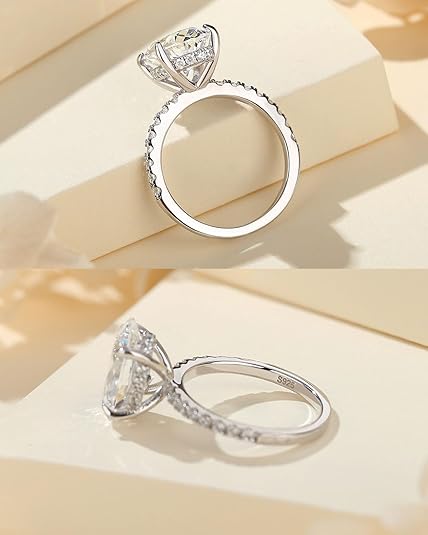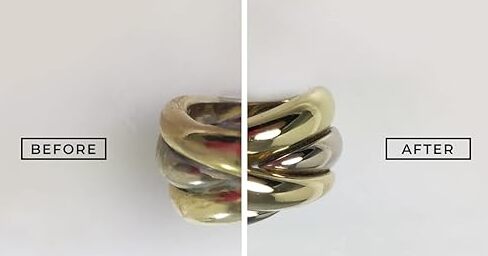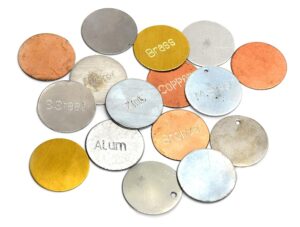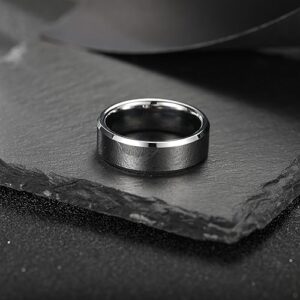Has Your White Gold Lost Its Sparkle? You may have looked down at your beautiful white gold ring and noticed something strange—it’s not as bright and shiny as it used to be. Maybe it even looks a little… yellow?
Don’t worry, you’re not alone. The most common questions people have about white gold:
“Why is my white gold jewelry turning yellow?” OR “Does white gold turnish”
Let’s uncover the truth together.
Table of Contents
What Is White Gold?
White gold isn’t actually white by nature—surprising, right. It starts out as yellow gold, which is then mixed with white-colored metals like nickel, palladium, or silver to lighten its color. This mixture creates an alloy that’s stronger and more durable than pure gold (which is quite soft).
But even after mixing, the metal still has a slight yellow tint, which is why white gold is almost always coated in a thin layer of rhodium. Rhodium is a shiny, silver-colored metal that gives white gold its bright white, reflective look. It’s like the finishing touch—cosmetic and protective!

Does White Gold Tarnish?
Quick answer: No, white gold doesn’t tarnish like silver does.
You might notice your white gold jewelry turning a little yellow over time—but that’s not actual tarnish. Tarnishing is what happens to silver when it reacts with air or moisture, causing that dark, dull layer. White gold doesn’t react that way.
What really happens is this: the rhodium plating wears off.
That outer rhodium layer gives white gold its signature bright white, mirror-like finish. But over time—especially if you wear it daily—this plating slowly fades. When it does, the natural, slightly yellow tone of the gold alloy underneath starts to show through.
Factors That Affect White Gold Tarnishing
Even though white gold doesn’t exactly tarnish like silver, its look can change over time. Several factors affect how quickly your white gold loses its shine or starts to look yellowish. Knowing these can help you take better care of your jewelry.
- Your Skin’s Chemistry: Everyone’s skin is a little different. Some people naturally have more acidic or oily skin, and this can wear down the rhodium plating faster. If your skin is on the oily side or you sweat a lot, your white gold might lose its shine sooner.
- Lotions, Perfumes, and Chemicals: Everyday products like lotions, perfumes, hair sprays, and even deodorants can affect your jewelry. These often contain chemicals that react with the rhodium plating, making it fade faster.
- Swimming Pools and Hot Tubs: Chlorine(a common chemical in pools and hot tubs) is tough on white gold. It can wear down the rhodium layer and make your jewelry look less shiny.
- Household Cleaners: Harsh cleaning products contain chemicals that can dull or damage the rhodium plating.
- Physical Wear and Tear: Everyday bumps, scrapes, and rubbing against surfaces slowly wear down the rhodium plating. Wearing your jewelry during sports, gardening, or heavy lifting means the plating may fade faster.
How to Bring Back it's Shine(Restore White Gold)
Restoring your white gold jewelry is easier than you might think. The Solution is rhodium replating, a process where a jeweler applies a fresh layer of shiny rhodium metal to your piece. This thin plating gives white gold its bright, mirror-like finish and covers any yellow tint that appears when the old plating wears off.
First, the jeweler cleans your jewelry carefully to remove any dirt or oils. Then, your piece is dipped into a special rhodium solution, or the rhodium is applied using an electroplating method. This coats your jewelry evenly, making it look brand new again.

How to Care for and Prevent Tarnish on White Gold
Keeping your white gold jewelry shining bright doesn’t have to be hard. With a little care, you can prevent that dull, yellow look and enjoy your pieces for years.
- Clean Gently and Regularly: One of the best ways to keep white gold looking fresh is to clean it regularly. Use warm water mixed with a gentle dish soap and a soft cloth or a soft-bristled toothbrush to remove dirt and oils. Rinse well and dry with a clean, soft cloth. Avoid harsh cleaners or toothpaste—they can scratch or damage your jewelry.
- Keep Away from Harsh Chemicals: Chemicals like bleach, chlorine, and household cleaners can quickly wear away rhodium plating. Always take off your white gold rings and bracelets before cleaning or using products with strong chemicals.
- Remove Jewelry Before Swimming or Bathing: Chlorine and even saltwater can damage the plating on white gold. It’s best to remove your jewelry before swimming in pools, hot tubs, or the ocean.
- Avoid Lotions and Perfumes: Try to put on your jewelry last, after applying lotions, perfumes, or hairspray. These products contain chemicals that can dull the shine or speed up plating wear.
- Store Jewelry Properly: When you’re not wearing your white gold, store it in a soft cloth pouch or a jewelry box lined with fabric. This keeps it safe from scratches and exposure to air, which can cause dullness over time.
Frequently Asked Question's
You can clean it gently at home, but if the shine is gone because the rhodium is worn off, only a jeweler can restore it by replating.
No, white gold doesn’t rust. It can lose its shine as the rhodium layer wears off, but that’s not rust—just normal wear.
Yes! White gold is durable for daily wear, but the rhodium coating may fade faster. To keep it shiny, get it replated every 1–2 years.



